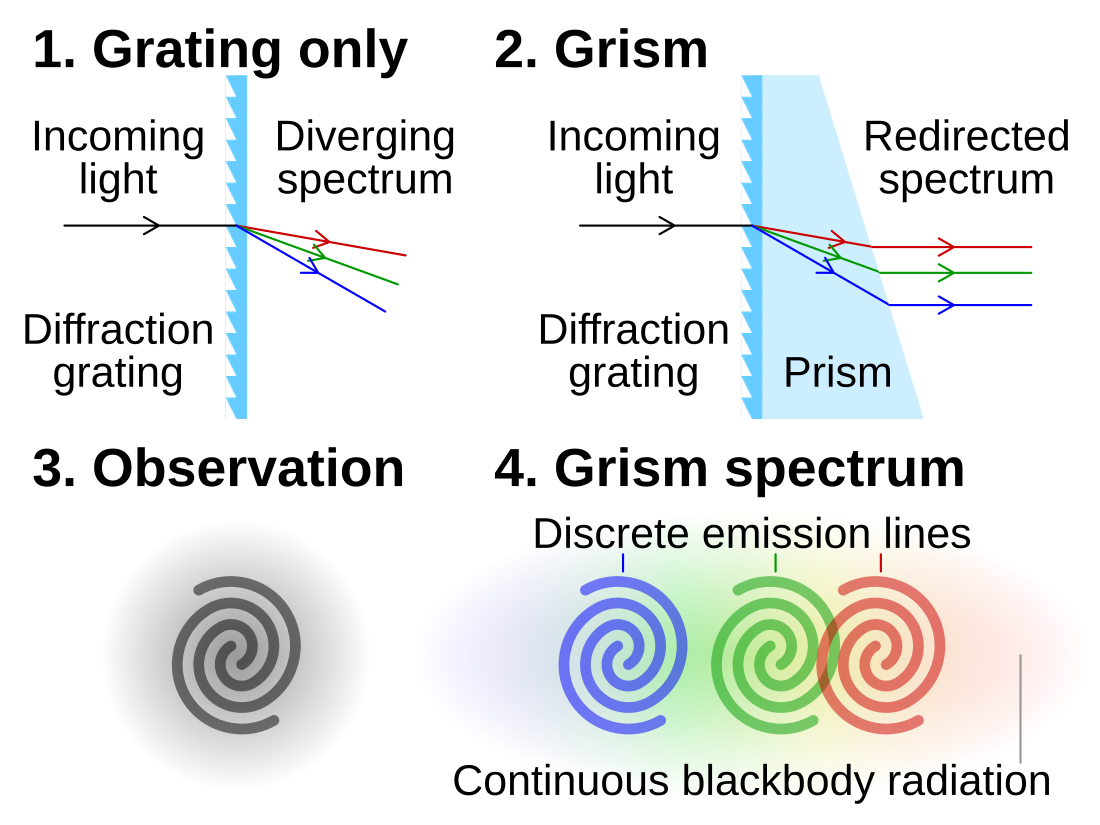Top Qs
Timeline
Chat
Perspective
Grism
Optical element that reflects and diffracts light From Wikipedia, the free encyclopedia
Remove ads
A grism (also called a grating prism) is a combination of a prism and grating arranged so that light at a chosen central wavelength passes straight through. The advantage of this arrangement is that one and the same camera can be used both for imaging (without the grism) and spectroscopy (with the grism) without having to be moved. Grisms are inserted into a camera beam that is already collimated. They then create a dispersed spectrum centered on the object's location in the camera's field of view.[1]


The resolution of a grism is proportional to the tangent of the wedge angle of the prism in much the same way as the resolutions of gratings are proportional to the angle between the input and the normal to the grating. The dispersed wavefront sensing system (as part the NIRCam instrument) on the James Webb Space Telescope uses grisms. The system allows coarse optical path length matching between the different mirror segments.[2]
Remove ads
History
The grating prism was first described in 1973 by Ira Bowen and Arthur H. Vaughan in a paper explaining an experiment using a "non-objective grating" located in the convergent beam of a telescope, which allowed to significantly reduce its off-axis aberrations.[3] In 1997, this instrument was patented by Chungte W. Chen and Ernest W. Gossett (No 5,652,681), the name grism was chosen because of the combination grating-prism.[4]
Remove ads
Theory of theory
Summarize
Perspective

Gray color is usually used in the first order of diffraction and with an incident beam perpendicular to the entrance face of the grain. Under these conditions and at à wavelength λ, for a grism with vertex angle α, refractive index n and etching width d on a as a condition for the incident rays not to be deflected if they are at normal incidence. Since the first diffraction order is used:
It is also possible to deduce the dispersion δ of the grism:
The resolution of a grism is therefore proportional to the tangent of the angle of the vertex of the prism, in the same way that the resolution of a grating is proportional to the angle of the beam with the normal of the grating.[6]
Remove ads
See also
References
Wikiwand - on
Seamless Wikipedia browsing. On steroids.
Remove ads



